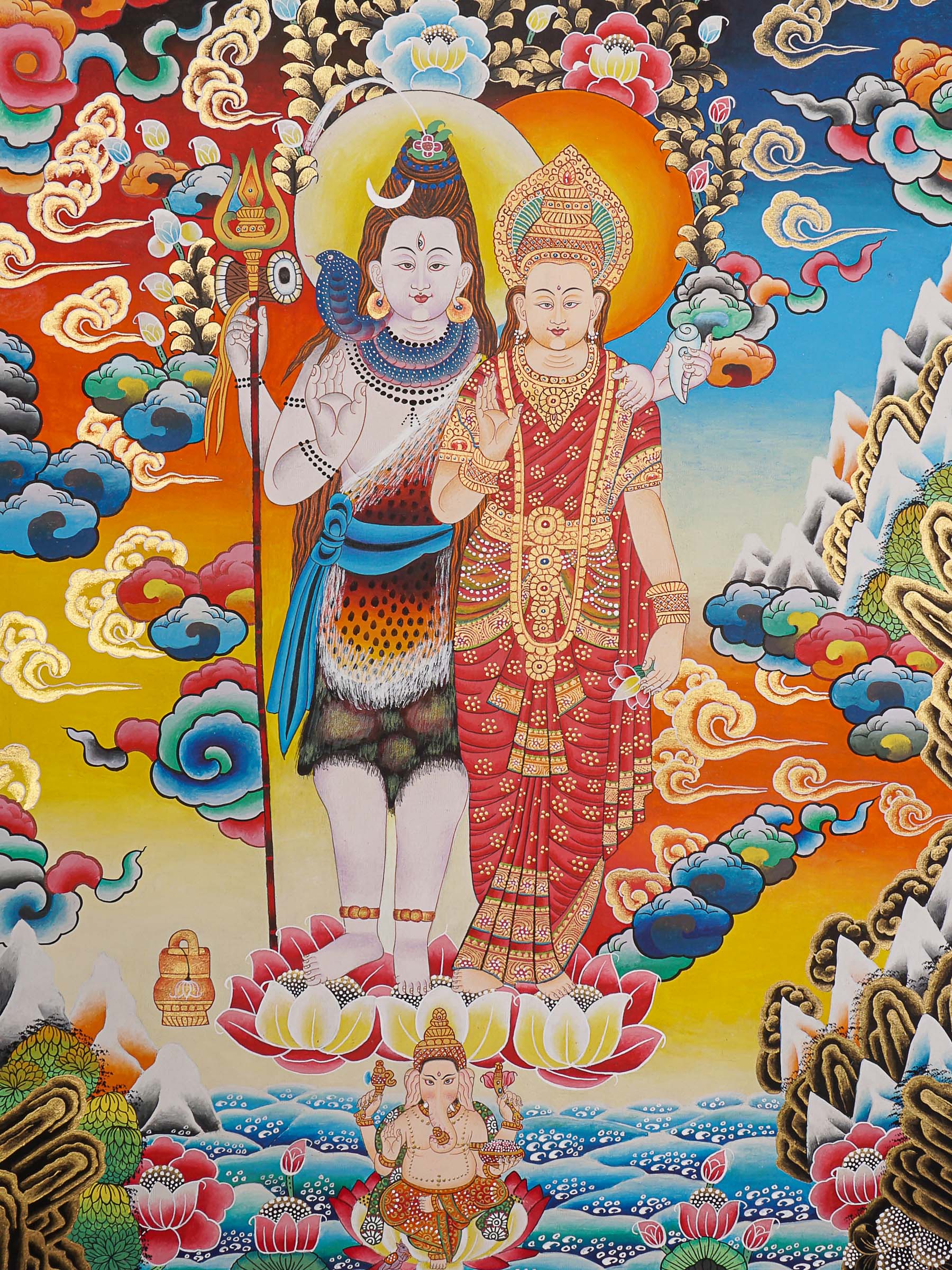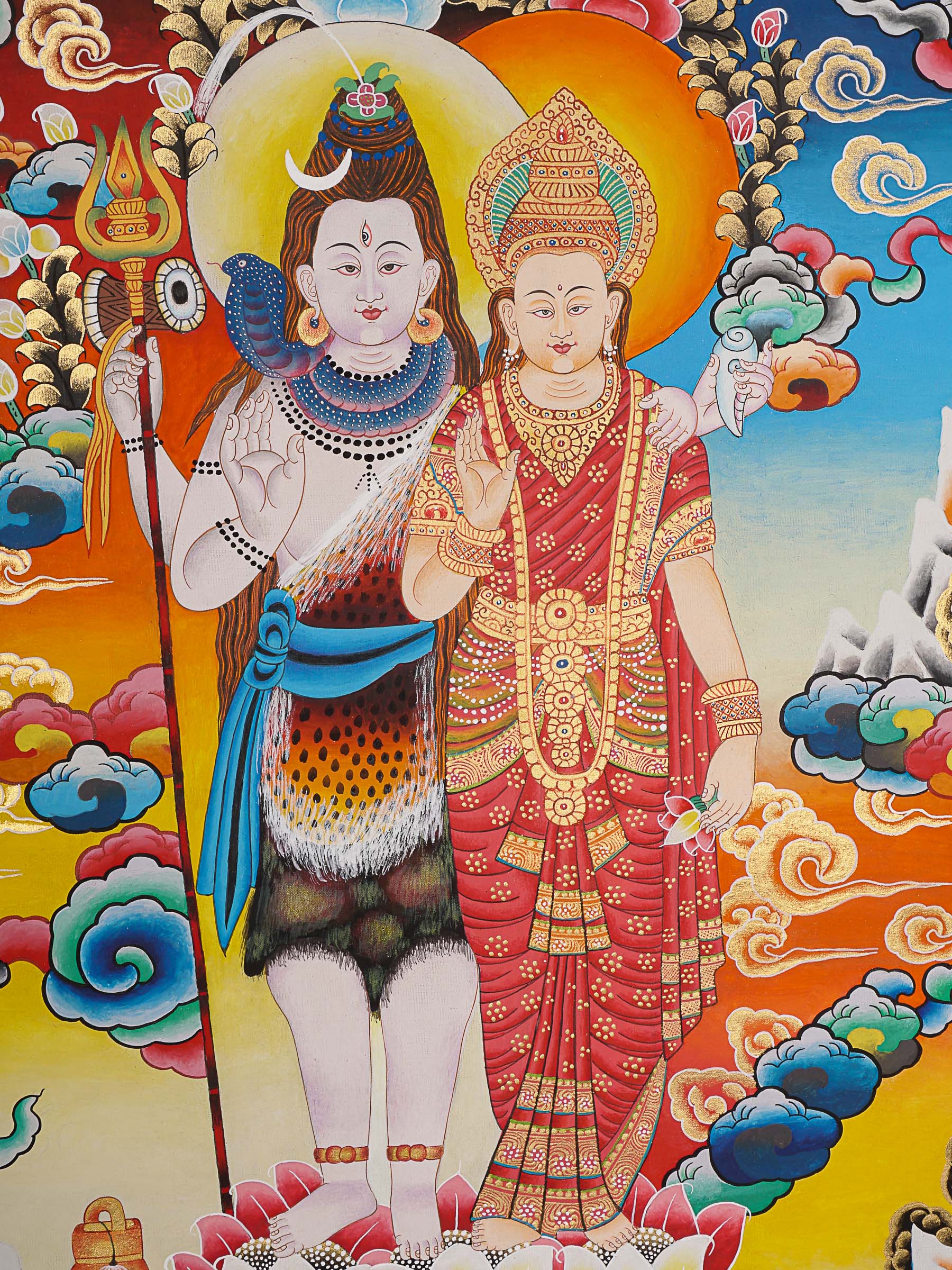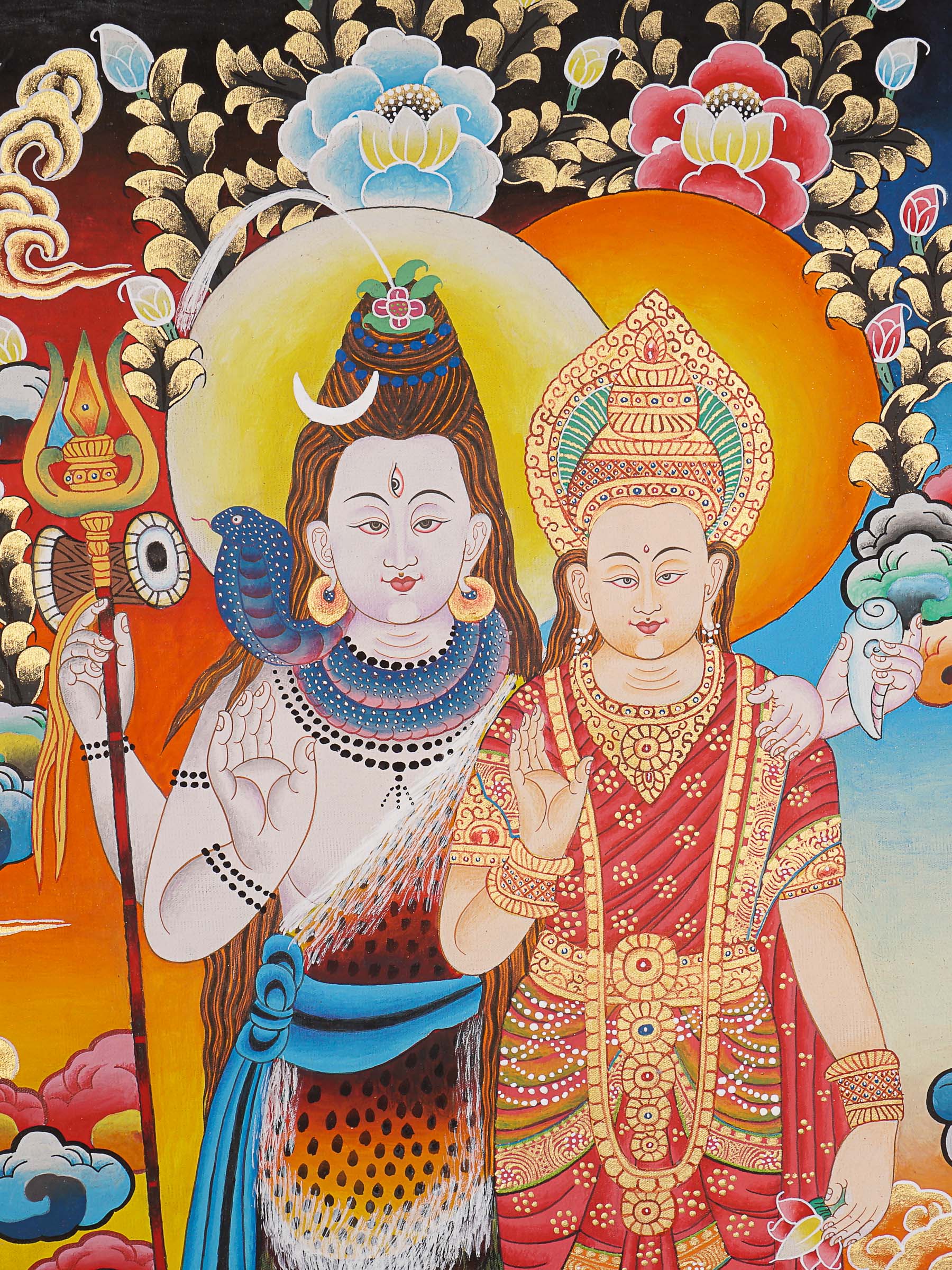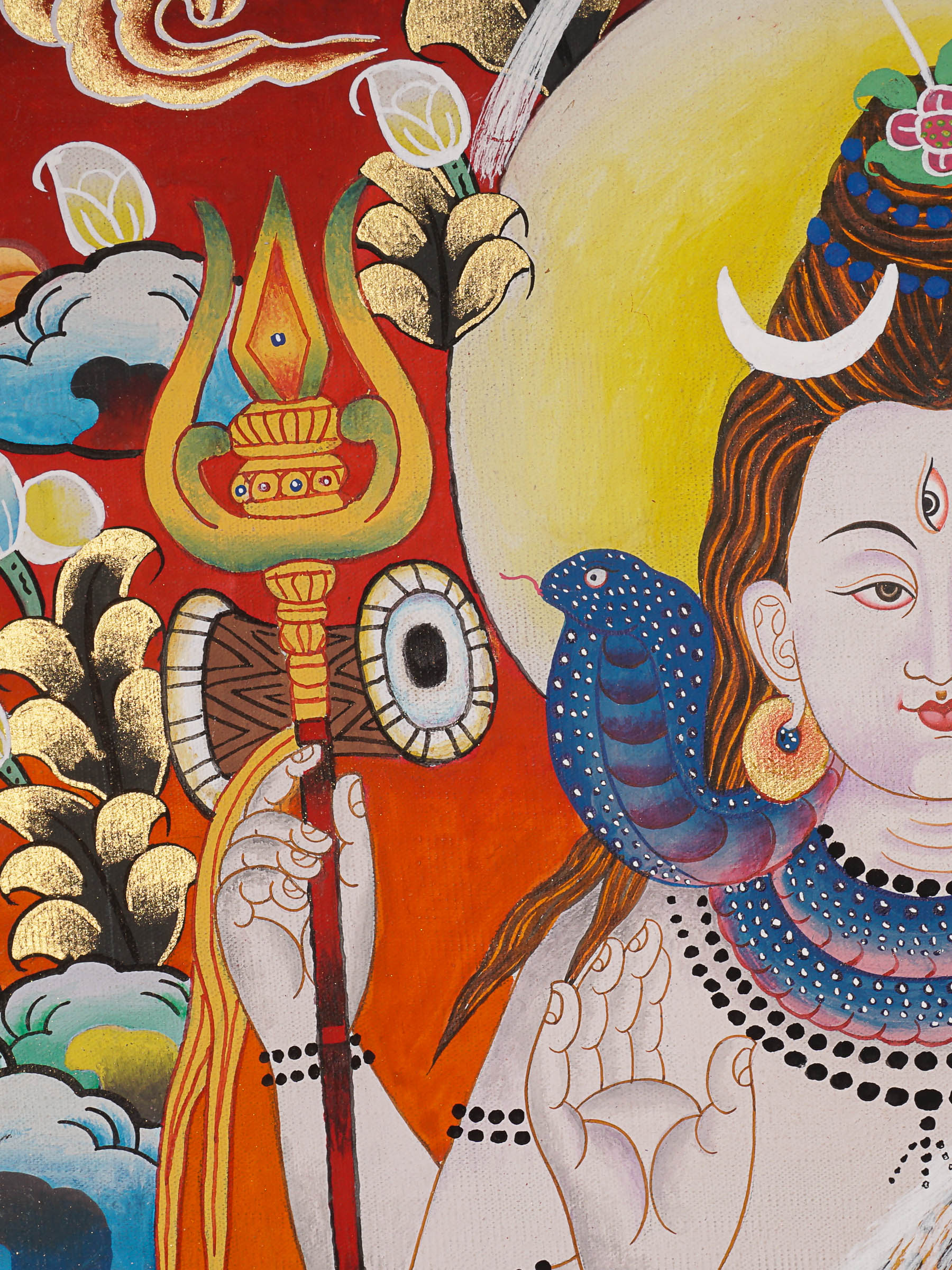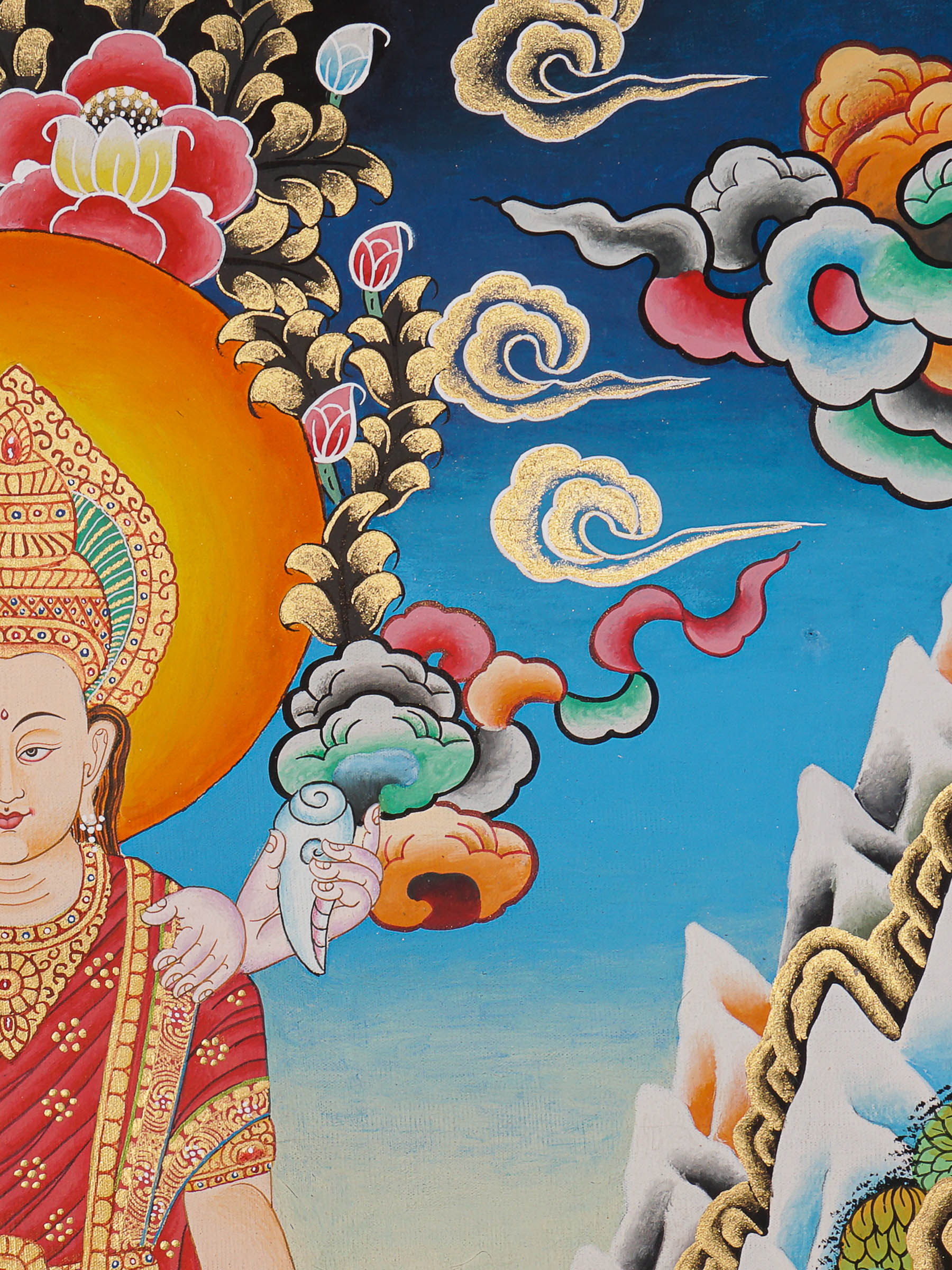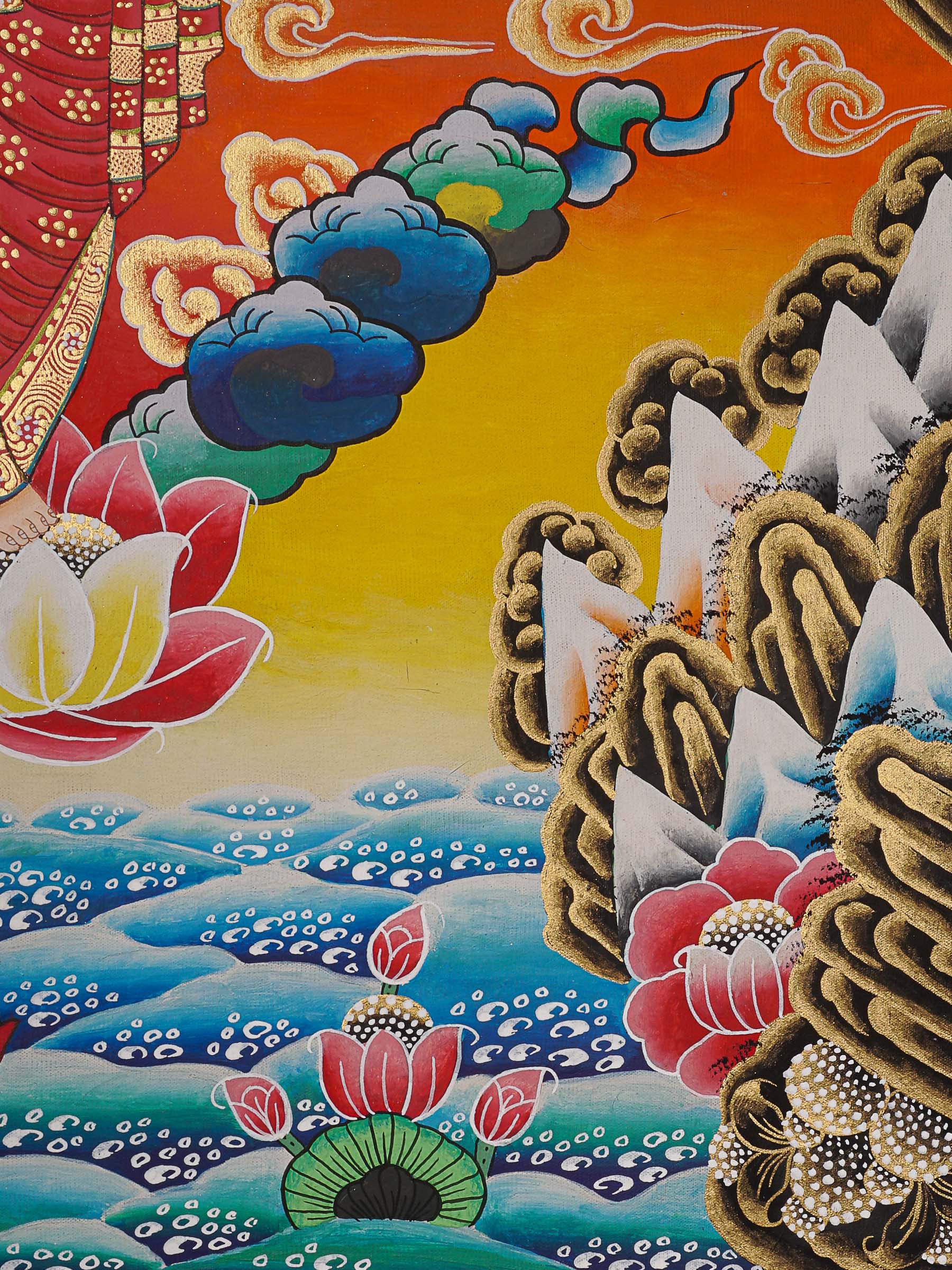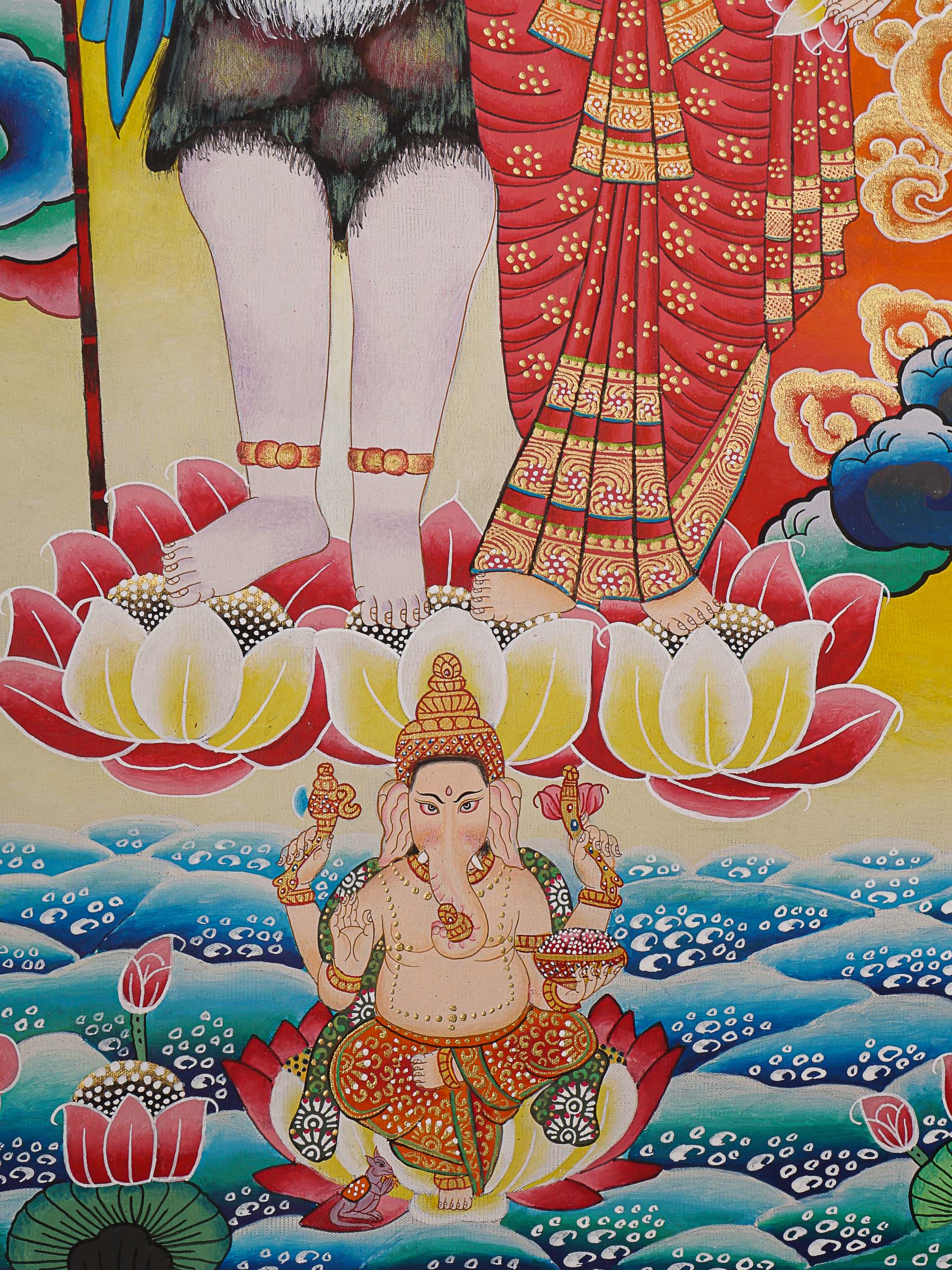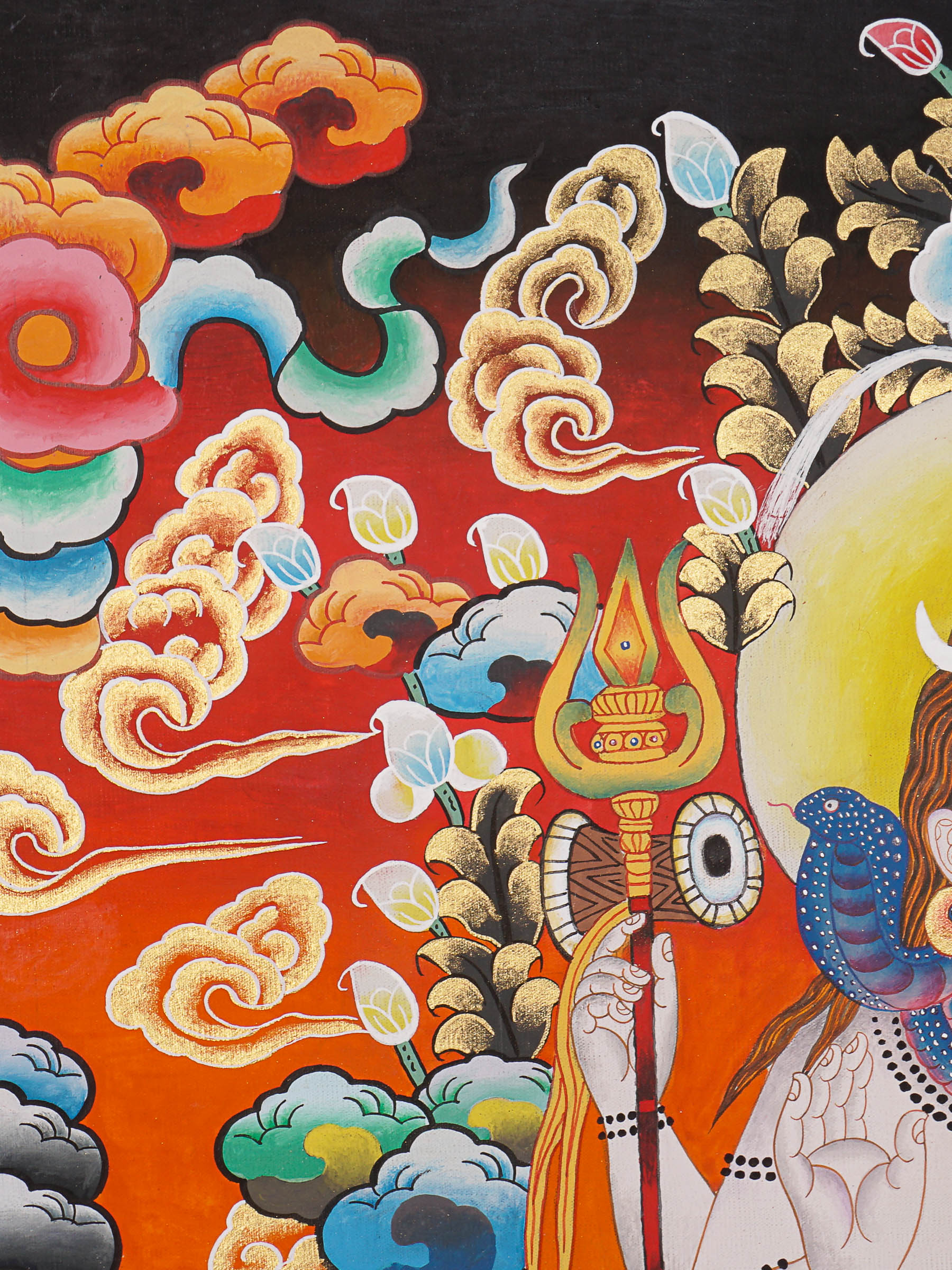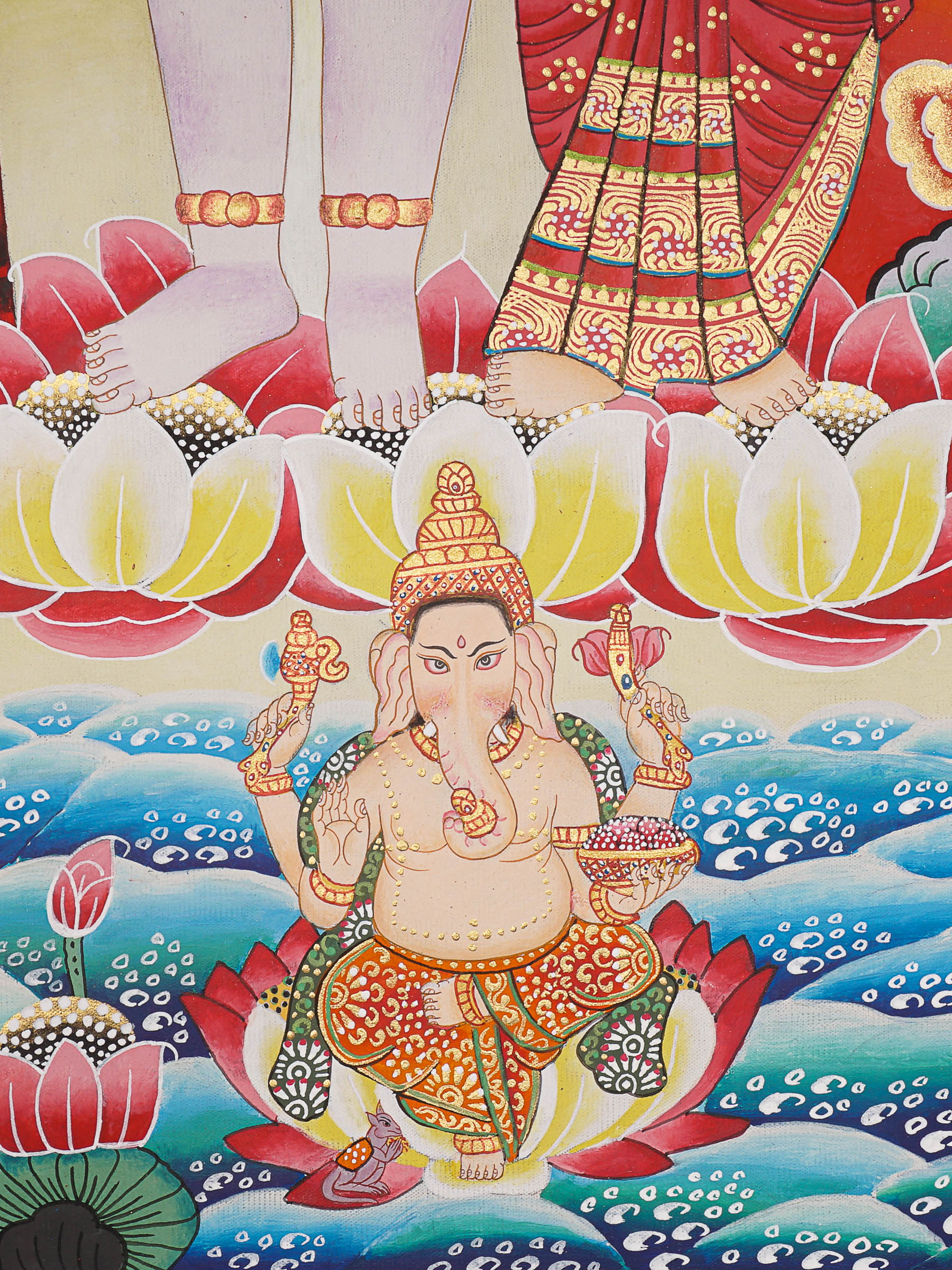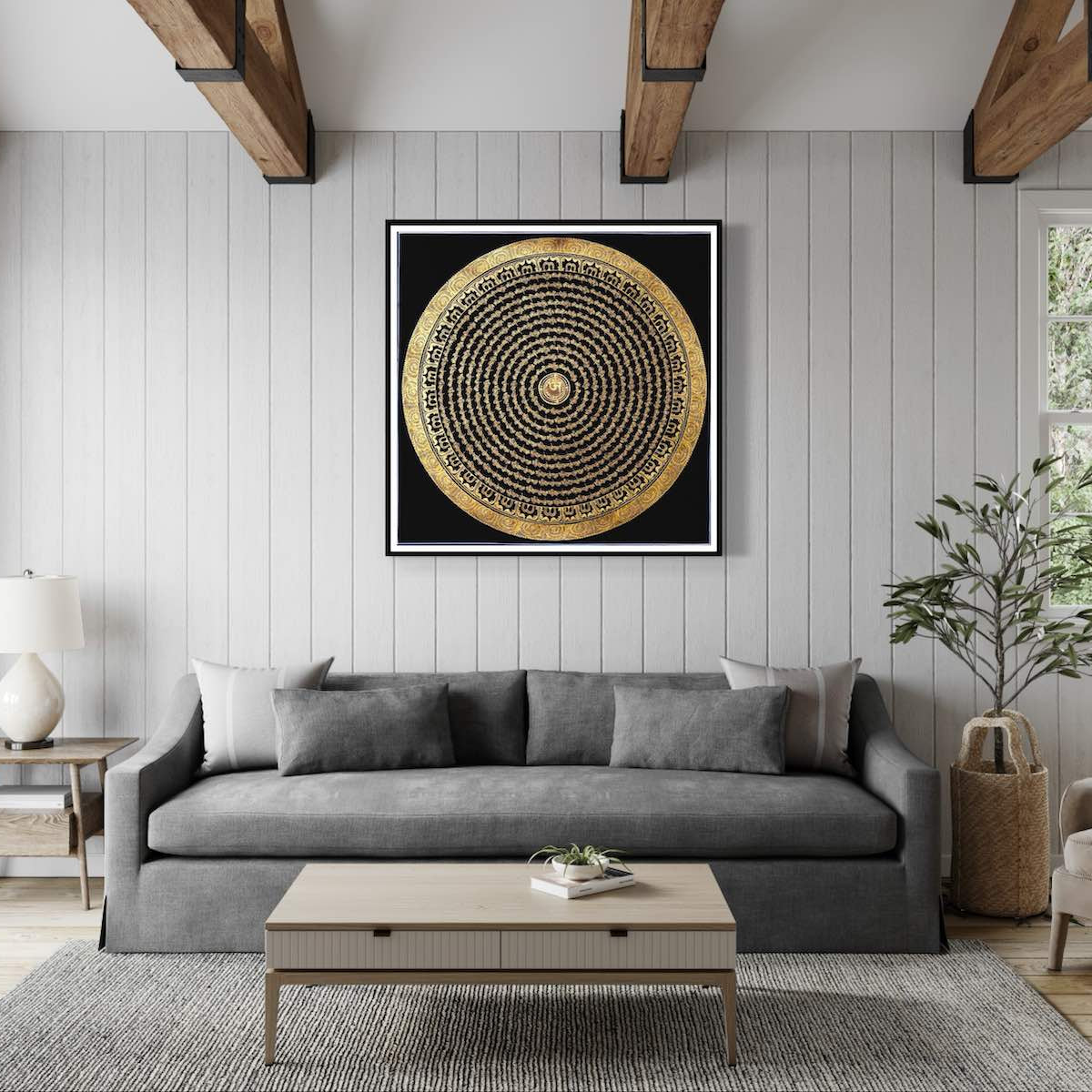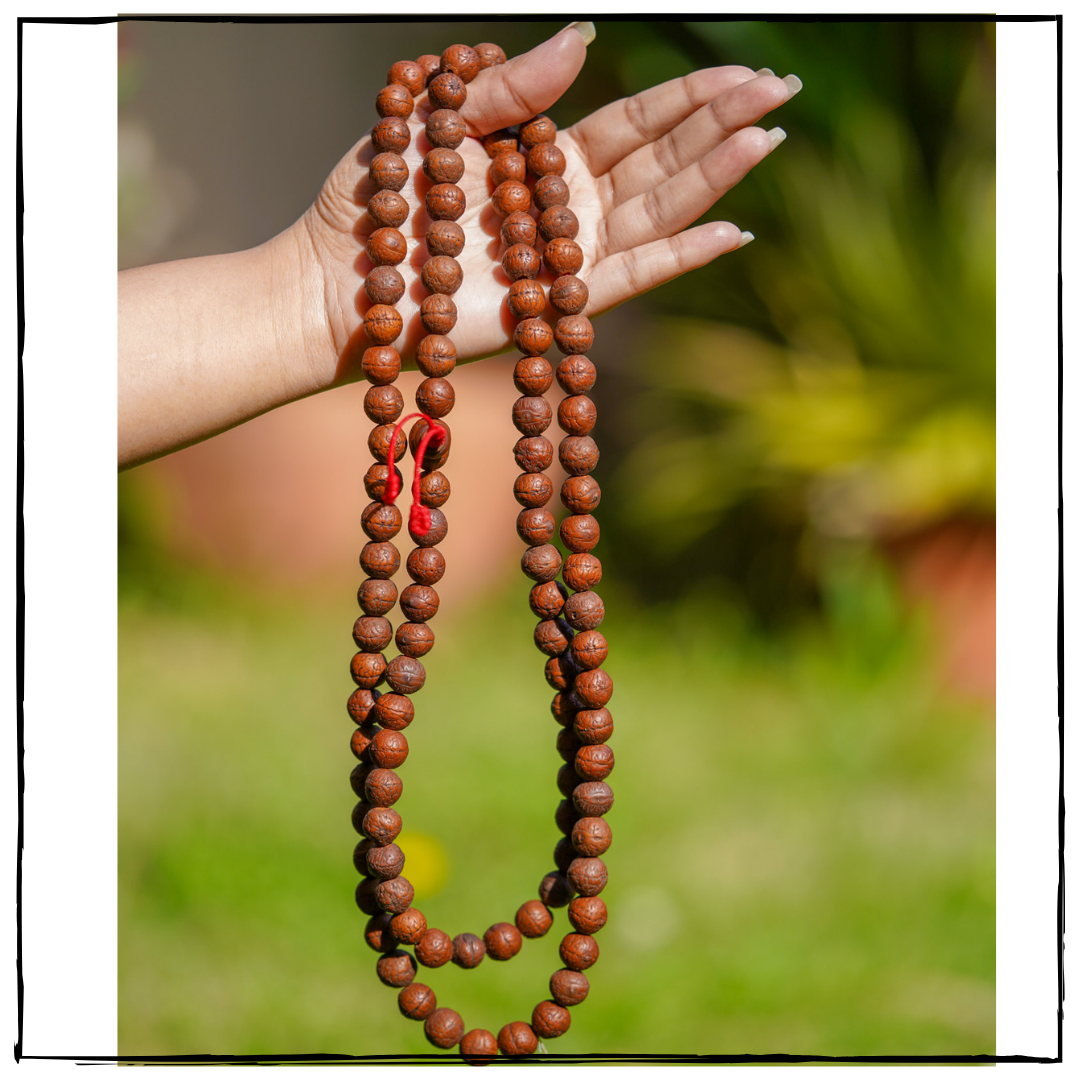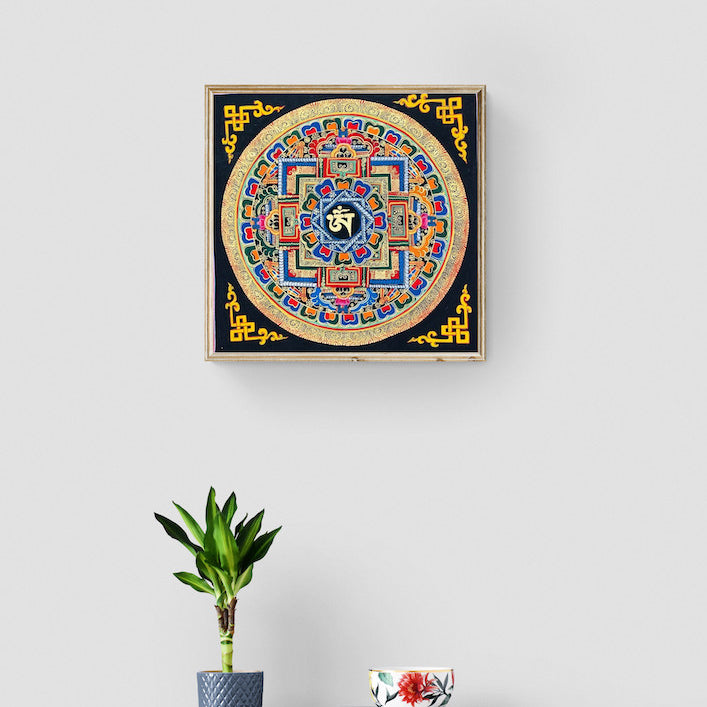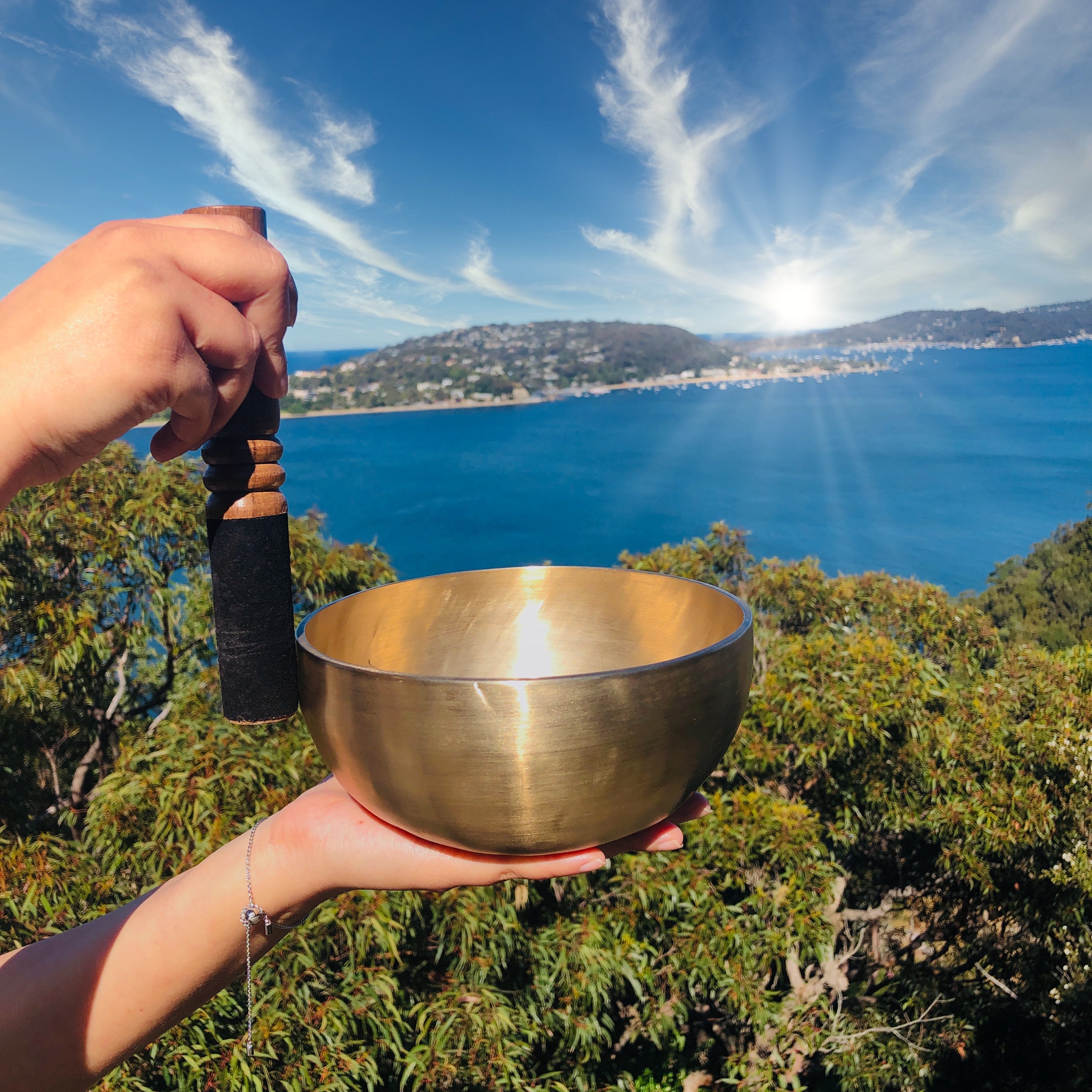Shiva Shakti Thangka Painting
Couldn't load pickup availability
Description
The Shiva Shakti Thangka is a sacred art form that depicts the holy union of Shiva and Shakti in the Tibetan Buddhist tradition. This traditional painting represents the cosmic balance between the masculine and feminine energies, with Shiva symbolizing destruction and transformation and Shakti representing creative power and energy. As an object for meditation and devotion, the Thangka is rich in symbolism and spiritual significance, making it an essential part of Tibetan Buddhist culture.
Key Features:
- Central Figures - Shiva and Shakti: The painting showcases the iconic duo of Shiva and Shakti in a tender embrace, symbolizing their inseparable and complementary relationship. Shiva is traditionally depicted with a composed and tranquil countenance, while Shakti exudes vibrant energy and vigor.
- Lotus Throne: Both deities are shown standing upon a lotus throne, symbolizing purity, enlightenment, and the unfolding of spiritual consciousness.
- Aureole or Halo: A radiant aureole or halo surrounds the heads of Shiva and Shakti, symbolizing their divine and enlightened nature.
- Detailed Ornamentation: The figures are richly adorned with detailed garments, jewelry, and symbolic items, reflecting the skilled craftsmanship and spiritual devotion of the artist.
Product Specification:
- Hand Painted
- Size: 68 cm x 43 cm
- Base: Cotton Canvas
- Origination: Nepal

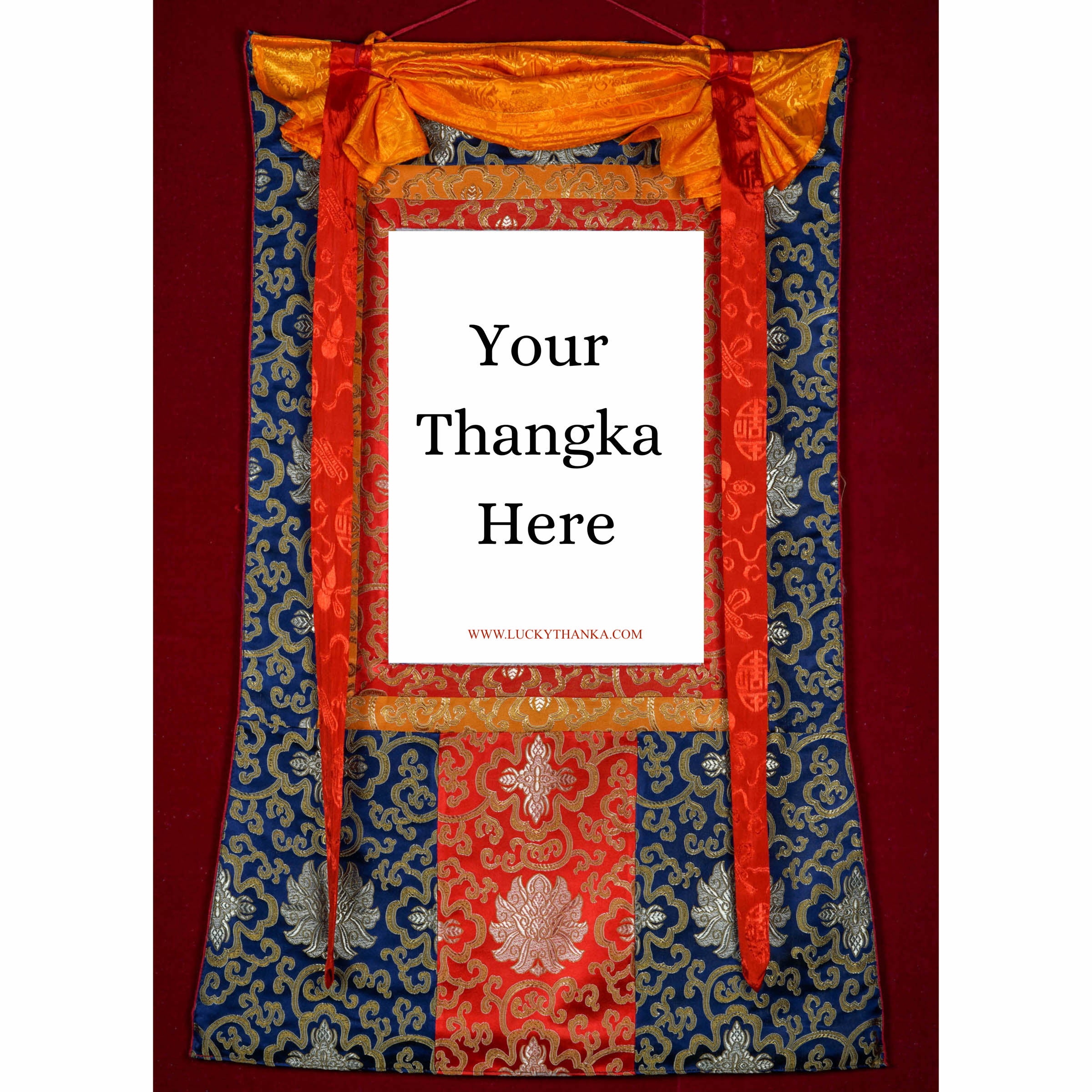
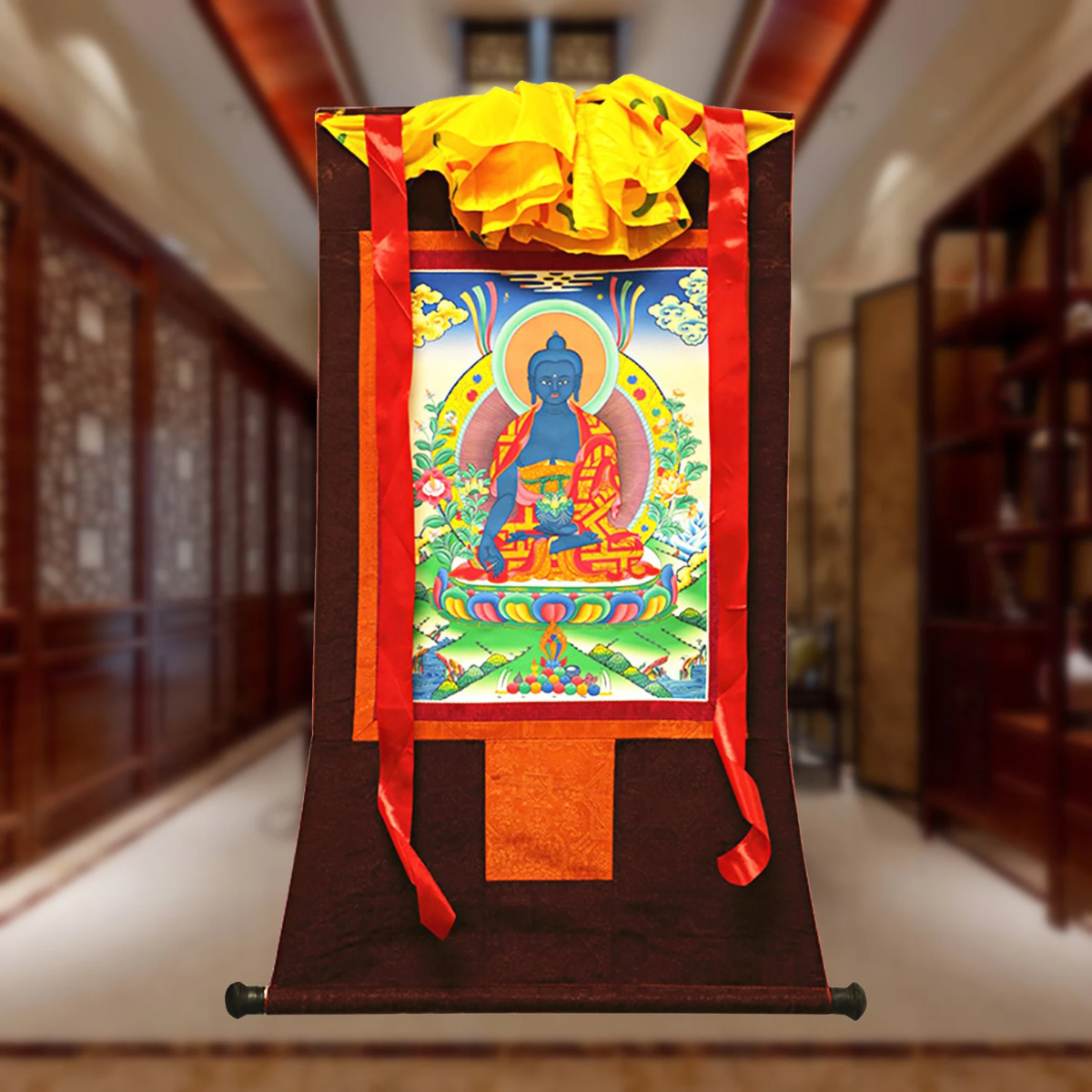
Hand Embroidery Brocade
Want to add a Brocade to your beautiful Thangka Painting? Traditional Style Brocade has been one of the most popular form of mounting as it has a greater religious merit.
Note: Make sure you have added the Thangka to your cart first.
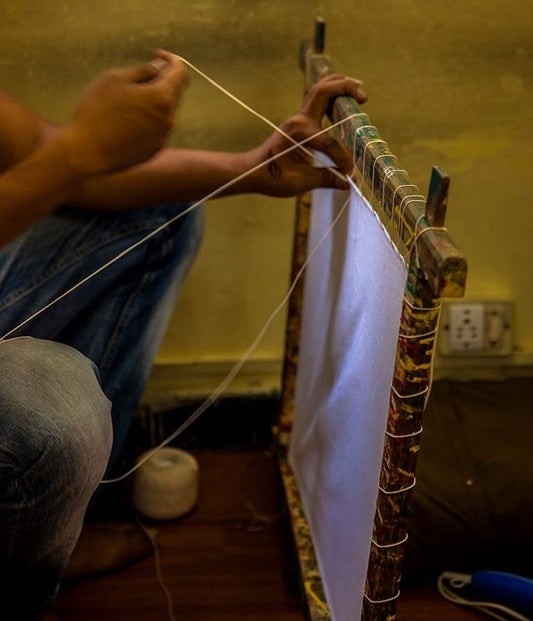
100% Cotton Canvas
Preparing the Cotton canvas before starting to paint a Thangka. This process includes washing, drying, stretching, sizing and everything needed to make a perfect base for the thangka to last for centuries.
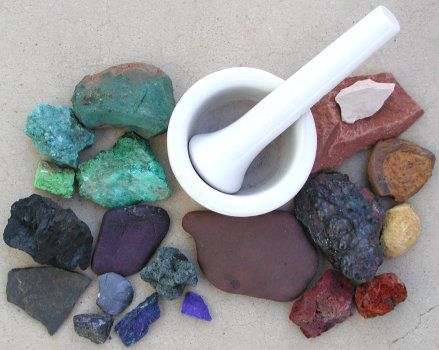
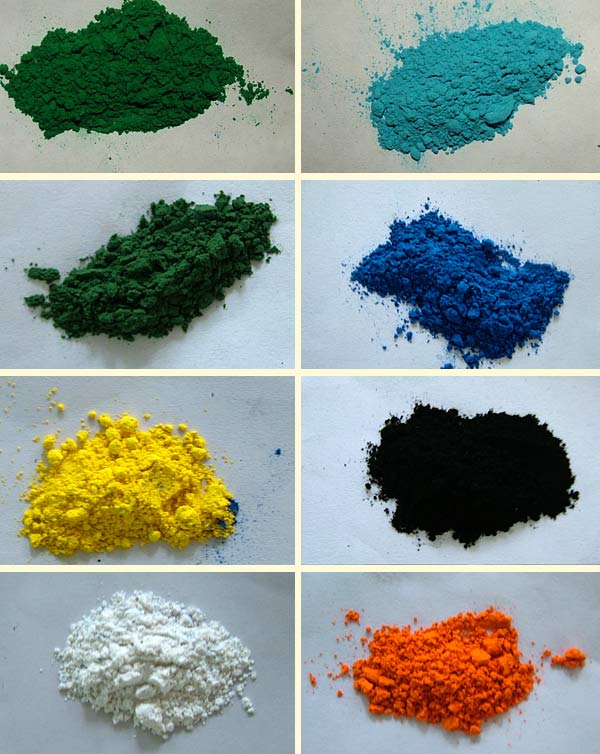
Natural Minerals
Thangka Paintings are painted using the natural minerals. These are firstly grind into the powder form and then used in the thangka as a paint.



